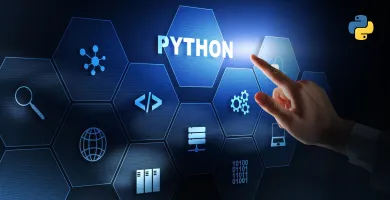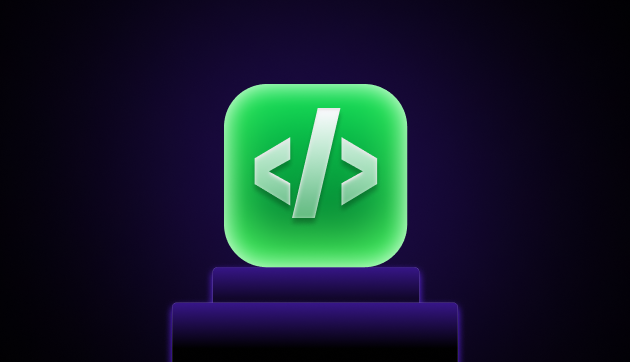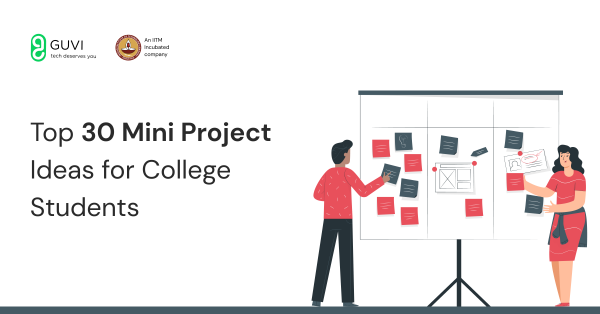
Top 12 Electrical Project Ideas for Engineering Students [ Updated]
Oct 31, 2025 5 Min Read 50831 Views
(Last Updated)
Practical projects are an important part of your educational journey. They not only reinforce theoretical knowledge but also provide a platform to innovate and solve real-world problems.
In this post, we will explore various project ideas tailored for different skill levels—from simple circuits perfect for beginners to advanced systems that integrate cutting-edge technologies. These projects are designed to spark your creativity, enhance your problem-solving skills, and prepare you for a successful career in electrical engineering.
So, grab your multimeter, fire up your soldering iron, and let’s get ready to build some exciting projects that could light up your resume and maybe, quite literally, power the future!
Table of contents
- What is Electrical Engineering?
- Top 12 Electrical Project Ideas for Engineering Students
- Beginner-Level Electrical Projects
- Intermediate-Level Electrical Projects
- Advanced-Level Electrical Projects
- Bonus Electrical Engineering Projects
- Conclusion
- FAQs
- What are the best electrical projects for beginners?
- How can intermediate students enhance their skills through projects?
- What advanced projects can help students prepare for a professional career in electrical engineering?
What is Electrical Engineering?
Electrical engineering is a branch of engineering that primarily concerns the study, design, development, and application of technologies related to electricity, electronics, and electromagnetism. It is a diverse field that can involve everything from small microchips to large power station generators.
Also Read: Top 5 Tech Careers of the Future [2025]
Here are some key aspects of electrical engineering:
- Circuit Design: Electrical engineers design and develop electrical circuits used in various applications, from small household appliances to large-scale electrical power systems.
- Electronics: This subfield focuses on the behavior and movement of electrons in semiconductor materials, essential for creating electronic devices, including diodes, transistors, and integrated circuits.
- Power Engineering: Engineers in this specialty focus on the generation, transmission, distribution, and utilization of electric power. They work on various technologies, from renewable energy systems like solar panels and wind turbines to traditional coal and nuclear power plants.
- Control Systems: This area involves designing controllers that monitor and regulate the behavior of machines and systems. It includes everything from simple home heating systems to complex flight control systems in aircraft.
- Telecommunications: Electrical engineers also develop systems for transmitting information across channels, such as fiber optics, wireless communication networks, and satellite communications.
- Signal Processing: Engineers process signals, such as audio, video, and data, ensuring accurate communication and functionality in systems like radios, televisions, and mobile phones.
- Instrumentation Engineering: This specialty focuses on the design of devices that measure, monitor, and control industrial operations. Instrumentation engineers often work in industries that require precise control of conditions such as temperature, pressure, and humidity.
Electrical engineering requires a strong foundation in mathematics and physics and typically involves using sophisticated software and tools to simulate, analyze, and solve complex problems. It is an ever-evolving field with innovations constantly emerging, making it a dynamic and exciting area of study and work.
Ready to learn robotics? Enroll in HCL GUVI’s Arduino Course to gain hands-on experience and elevate your skills. Start your journey today!
Now that we understand what electrical engineering is, let’s explore some top project ideas for engineering students.
Top 12 Electrical Project Ideas for Engineering Students
Electrical engineering students are always looking for innovative projects that challenge their skills and expand their knowledge. Here’s a list of project ideas across various levels of expertise:
Beginner-Level Electrical Projects
1. Simple LED Circuit
![Top 12 Electrical Project Ideas for Engineering Students [ Updated] 1 Simple LED Circuit](https://www.guvi.in/blog/wp-content/uploads/2024/05/2_simple_led_circuit.webp)
Design and implement a basic circuit that lights up an LED. This project is fundamental for understanding electrical components and how current flows through a circuit. You’ll use a resistor to control the amount of current that flows through the LED, protecting it from high voltage.
Time Taken: 2 hours
Difficulty Level: Easy
Tools Used: Online Circuit Simulator, such as DCACclab
Circuit Type: Basic Series Circuit
Learning Outcome: In-depth understanding of LED circuit, how current flows through a circuit, and how resistors protect components like LEDs
Deployment: DCACclab or GitHub
Source Code: Simple LED Circuit
2. Battery Tester
![Top 12 Electrical Project Ideas for Engineering Students [ Updated] 2 Battery Tester](https://www.guvi.in/blog/wp-content/uploads/2024/05/3_battery_tester.webp)
Build a simple device that measures the remaining charge in batteries. This project introduces you to voltage measurement techniques and basic electronic components. You will create a circuit that can connect to different types of batteries and display their charge level, teaching you about battery chemistry and electricity basics.
Time Taken: 3 hours
Difficulty Level: Easy
Tools Used: TestStand, LabVIEW, and NI SystemLink
Circuit Type: Automated Battery Testing System
Learning Outcome: You will gain hands-on experience in data logging, an automated testing system, and analysis using industry-standard software tools
Deployment: GitHub
Source Code: Battery Tester
3. Water Level Indicator
![Top 12 Electrical Project Ideas for Engineering Students [ Updated] 3 Water Level Indicator](https://www.guvi.in/blog/wp-content/uploads/2024/05/4_water_level_indicator.webp)
Create a circuit that detects and indicates the water level in a tank. This project involves sensors that detect water levels and send signals to an indicator or an alarm. It’s great for understanding sensor integration and signal processing.
Time Taken: 3 hours
Difficulty Level: Easy
Tools Used: TestStand, LabVIEW, and NI SystemLink
Circuit Type: Automated Battery Testing System
Learning Outcome: You will gain hands-on experience in data logging, an automated testing system, and analysis using industry-standard software tools
Deployment: GitHub
Source Code: Water Level Indicator
Intermediate-Level Electrical Projects
4. Solar Charger
![Top 12 Electrical Project Ideas for Engineering Students [ Updated] 4 Solar Charger](https://www.guvi.in/blog/wp-content/uploads/2024/05/5_solar_charger.webp)
Design a small solar charger for mobile devices. This project teaches you about renewable energy sources, specifically solar power, and how to convert and store this energy efficiently using a circuit. You will also explore the design of charge controllers and battery management systems.
Time Taken: 5 hours
Difficulty Level: Intermediate
Tools Used: LM338/LM317 Voltage Regulator, Proteus, NI Multisim, SolidWorks, PCB Design Tools
Circuit Type: Solar Battery Charging System
Learning Outcome: Practical knowledge of solar energy systems and battery management
Deployment: GitHub
Source Code: Solar Charger
5. Infrared Security System
![Top 12 Electrical Project Ideas for Engineering Students [ Updated] 5 Infrared Security System](https://www.guvi.in/blog/wp-content/uploads/2024/05/6_infrared_security_system.webp)
Develop a security system based on infrared (IR) technology. This project involves setting up an IR transmitter and receiver that triggers an alarm when the line of sight is broken. It’s an excellent introduction to security systems and electronic monitoring.
Time Taken: 5 hours
Difficulty Level: Intermediate
Tools Used: Arduino IDE, Proteus, Tinkercad
Circuit Type: Infrared Sensor-Based Security System
Learning Outcome: Hands-on experience with IR sensors with Arduino IDE and basic understanding of security system design
Deployment: GitHub
Source Code: Infrared Security System
6. Digital Voltmeter
![Top 12 Electrical Project Ideas for Engineering Students [ Updated] 6 Digital Voltmeter](https://www.guvi.in/blog/wp-content/uploads/2024/05/7_digital_voltmeter.webp)
Construct a digital voltmeter to measure electrical potential. This project will provide you with the opportunity to work with digital displays and precision measuring tools. You will gain experience in embedded system programming and calibration.
Time Taken: 5 hours
Difficulty Level: Intermediate
Tools Used: Proteus, Tinkercad
Circuit Type: Digital Voltmeter
Learning Outcome: Hands-on experience with designing a digital voltmeter using ATMEGA32 microcontroller and displaying measurements on a 16×2 LCD screen
Deployment: GitHub
Source Code: Digital Voltmeter
7. Home Automation System
![Top 12 Electrical Project Ideas for Engineering Students [ Updated] 7 Home Automation System](https://www.guvi.in/blog/wp-content/uploads/2024/05/8_home_automation_system.webp)
Use IoT technology to create a system that controls various home appliances remotely. This project incorporates wireless communication, user interface design, and possibly cloud computing to manage and monitor home devices from a smartphone or a computer.
Time Taken: 5 hours
Difficulty Level: Intermediate
Tools Used: Arduino UNO, HC-05 Bluetooth Module, Arduino IDE, Android App (Device Control), Proteus
Circuit Type: Bluetooth-Based Home Automation System
Learning Outcome: Experience on Arduino IDE with Bluetooth for wireless control and implementing remote switching for multiple devices
Deployment: GitHub
Source Code: Home Automation System
Advanced-Level Electrical Projects
8. Wireless Power Transfer System
![Top 12 Electrical Project Ideas for Engineering Students [ Updated] 8 Wireless Power Transfer System](https://www.guvi.in/blog/wp-content/uploads/2024/05/9_wireless_power_transfer_system.webp)
Design a project to transfer electrical energy without physical connectors. This involves understanding and applying principles of magnetic resonance or inductive coupling to transmit power over a distance. It challenges you to think about efficiency and safety in energy transfer.
Time Taken: 9 hours
Difficulty Level: Advanced
Tools Used: KiCAD (PCB Design), LTspice (Simulation), Arduino IDE (Embedded Code), Thermal Imaging (Testing)
Circuit Type: Resonant Inductive Wireless Power Transfer System
Learning Outcome: Experience in designing a high-efficiency wireless power system using resonant inductive coupling and testing performance in both air and underwater environments
Deployment: GitHub
Source Code: Wireless Power Transfer System
9. Smart Energy Meter
![Top 12 Electrical Project Ideas for Engineering Students [ Updated] 9 Smart Energy Meter](https://www.guvi.in/blog/wp-content/uploads/2024/05/10_smart_energy_meter.webp)
Develop an energy meter that monitors real-time energy usage and communicates this information to a smartphone. This project integrates data collection, real-time data processing, and wireless communication. It’s geared towards promoting energy conservation and helping users manage their power consumption more effectively.
Time Taken: 8 hours
Difficulty Level: Advanced
Tools Used: ESP32, PZEM-004T, Relay Module, Arduino IDE, Web Server
Circuit Type: Smart Energy Meter
Learning Outcome: Experience in developing IoT-based energy monitoring systems using microcontrollers and a web interface for real-time visualization and control
Deployment: GitHub
Source Code: Smart Energy Meter
Also Read: Best 15 Product-based Companies for IoT Solutions Architects in India
10. Robotics Arms
![Top 12 Electrical Project Ideas for Engineering Students [ Updated] 10 Robotics Arms](https://www.guvi.in/blog/wp-content/uploads/2024/05/11_robotics_arms.webp)
Design and build a robotic arm using stepper motors and sensors. This project involves programming the arm for precision movements and integrating sensors to enhance functionality, such as object recognition or automated handling tasks.
Time Taken: 10 hours
Difficulty Level: Advanced
Tools Used: Arduino IDE, Thingiverse (3D Printed Parts), Proteus (Simulation), PS2 Joystick Module, Servo Motors
Circuit Type: Stepper Motor-Based Robotic Arm
Learning Outcome: Hands-on experience in designing and programming a robotic arm using Arduino by integrating stepper motors for precise movements and a joystick interface for control
Deployment: GitHub
Source Code: Robotic Arms
Also Read: 4 Best Programming Languages For Robotics You Should Learn
11. Electric Vehicle Charger
![Top 12 Electrical Project Ideas for Engineering Students [ Updated] 11 Electric Vehicle Charger](https://www.guvi.in/blog/wp-content/uploads/2024/05/12_electric_vehicle_charger.webp)
Develop a charger for electric vehicles that can be monitored and controlled remotely. This project involves the design of high-power electronic circuits and the integration of communication modules for remote monitoring.
Time Taken: 6 hours
Difficulty Level: Advanced
Tools Used: ESP32-WROOM-32, Arduino IDE, Proteus, MATLAB, MQTT Broker, SPI Communication
Circuit Type: Smart Electric Vehicle Supply Equipment (EVSE)
Learning Outcome: Hands-on experience with designing and implementing a smart EV charger with remote monitoring
Deployment: GitHub
Source Code: Electric Vehicle Charger
12. AI-Powered Load Forecasting
![Top 12 Electrical Project Ideas for Engineering Students [ Updated] 12 AI-Powered Load Forecasting](https://www.guvi.in/blog/wp-content/uploads/2024/05/13_ai_powered_load_forecasting.webp)
Use machine learning algorithms to predict electricity demand in a network. This project combines data analytics with machine learning to forecast load, helping to optimize energy distribution and prevent overloads.
Time Taken: 6 hours
Difficulty Level: Advanced
Tools Used: Python, Jupyter Notebook, ARIMA, VAR, ADF Test, Johansen Test, World Weather Online API
Circuit Type: Load Forecasting System
Learning Outcome: Experience in time series forecasting, machine learning for electrical engineering projects, and weather forecasting.
Deployment: GitHub
Source Code: AI-Powered Load Forecasting
Bonus Electrical Engineering Projects
13. Solar-Powered Smart Charger
Design a smart solar charger that can automatically detect the connected device type (phone, tablet, power bank, etc.) and adjust voltage output accordingly. The system ensures optimal power utilization and protects against overcharging.
Time Taken: 8–10 hours
Difficulty Level: Advanced
Tools Used: Arduino, Solar Panel, Voltage Regulator, IoT Sensors
Circuit Type: Adaptive Charging Circuit
Learning Outcome: Understand renewable energy systems, MPPT (Maximum Power Point Tracking), and IoT integration for efficient charging.
Deployment: GitHub
Source Code: SolarSmartCharger
14. Battery Charge / Capacity Tester
Design an automated system that measures the remaining charge and capacity of different batteries. This project helps you understand voltage, resistance, and power measurement using microcontrollers.
Time Taken: 4–5 hours
Difficulty Level: Beginner
Tools Used: Arduino IDE, Multimeter, LCD
Circuit Type: Battery Testing and Analysis Circuit
Learning Outcome: Learn how to measure voltage, current, and battery health using sensors and simple microcontroller logic.
Deployment: GitHub
Source Code: Battery-Tester – GitHub
15. IoT-Based Smart Energy Monitoring System
Create a smart home energy meter that monitors and logs power usage in real time. You can track voltage, current, and consumption remotely using a dashboard or a mobile app.
Time Taken: 8 hours
Difficulty Level: Intermediate
Tools Used: ESP32, ThingSpeak, NodeMCU, IoT sensors
Circuit Type: IoT-Based Smart Power Management
Learning Outcome: Build real-time monitoring and automation skills using IoT protocols and cloud dashboards.
Deployment: GitHub
Source Code: Smart-Energy-Monitoring-System – GitHub
Ready to learn machine learning? Transform your career with HCL GUVI’s expert-led Machine Learning course. Gain hands-on experience and industry-relevant skills to power up your data journey. Don’t miss out on this opportunity to future-proof your career! Enroll now!
These projects not only enhance your technical skills but also prepare you for real-world challenges in electrical engineering. Each project offers a valuable opportunity to practice engineering principles and innovative thinking.
Conclusion
Take the leap, explore uncharted territories with your projects, and remember that every circuit designed, every code written, and every system implemented brings you one step closer to becoming a proficient and innovative electrical engineer. Embrace these challenges, and let your curiosity lead you to discover new solutions and technologies that could one day change the world.
FAQs
What are the best electrical projects for beginners?
For beginners, projects that focus on basic principles and simple implementations are ideal. Good starting points include building a simple LED circuit, creating a battery tester, or developing a water level indicator.
How can intermediate students enhance their skills through projects?
Intermediate students should focus on projects that challenge their understanding and allow them to apply their knowledge more broadly. Projects like designing a solar charger, developing an infrared security system, or constructing a digital voltmeter can be very beneficial.
What advanced projects can help students prepare for a professional career in electrical engineering?
Advanced students should consider tackling projects that involve complex systems and incorporate modern technologies. Building a home automation system using IoT, designing a wireless power transfer system, or developing a smart energy meter are excellent projects.
These require an understanding of current technologies, system integration, real-time data handling, and scalability.




































its very help full for me ,, thanks guvi blog